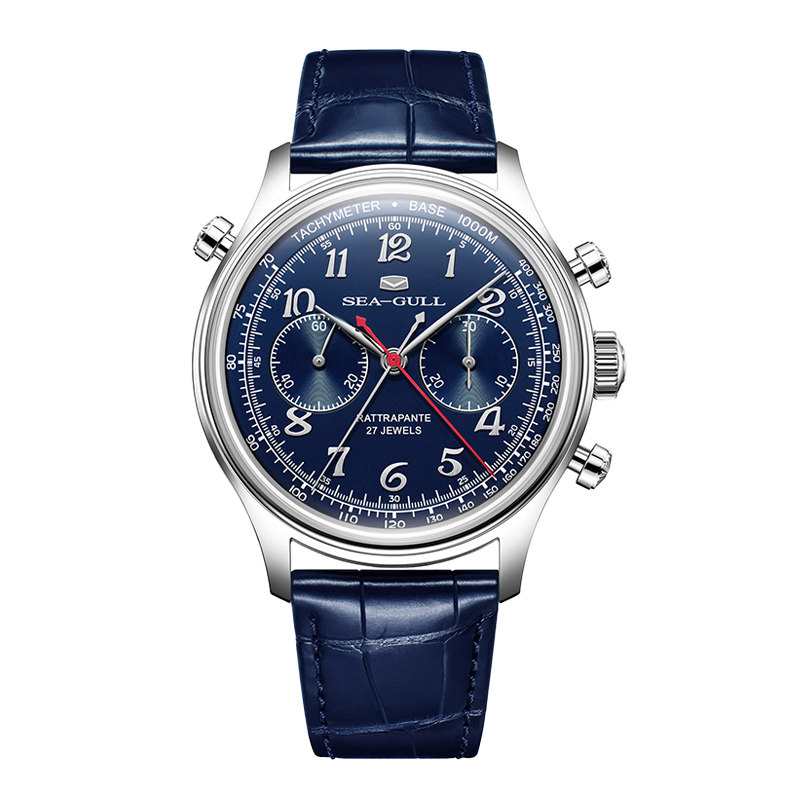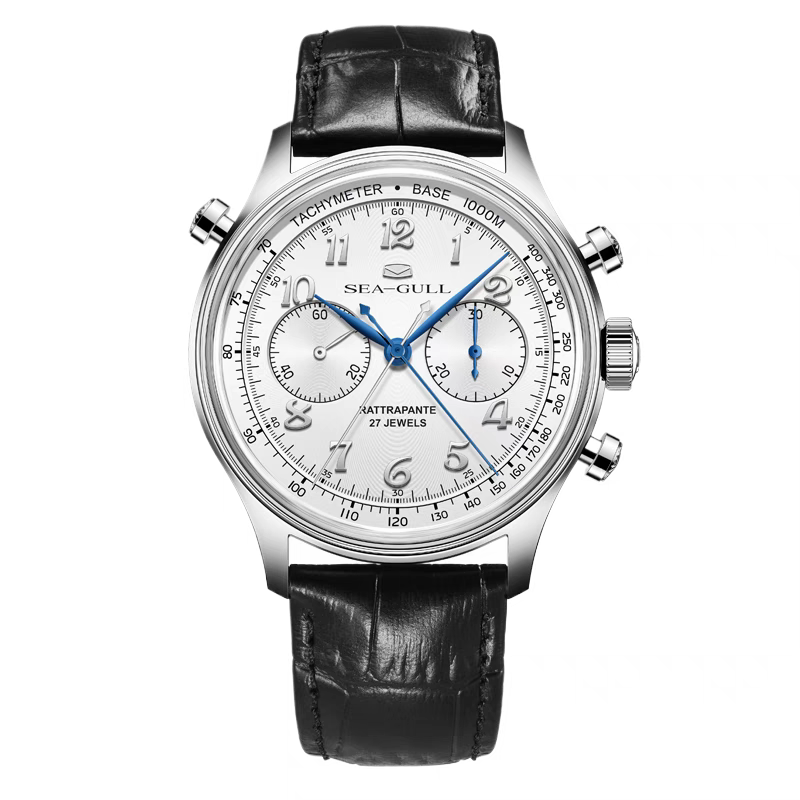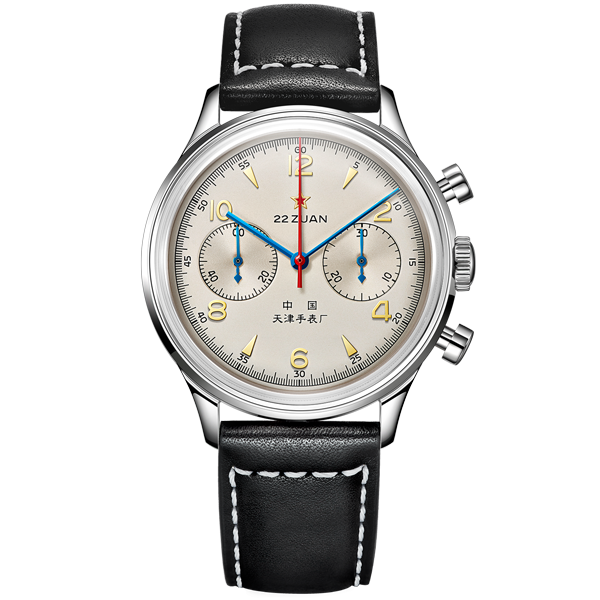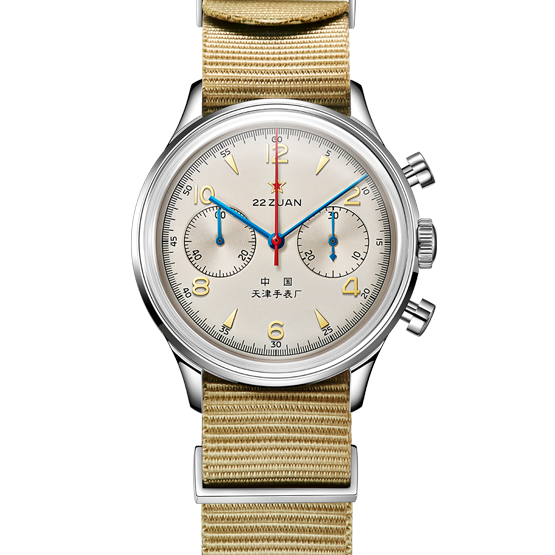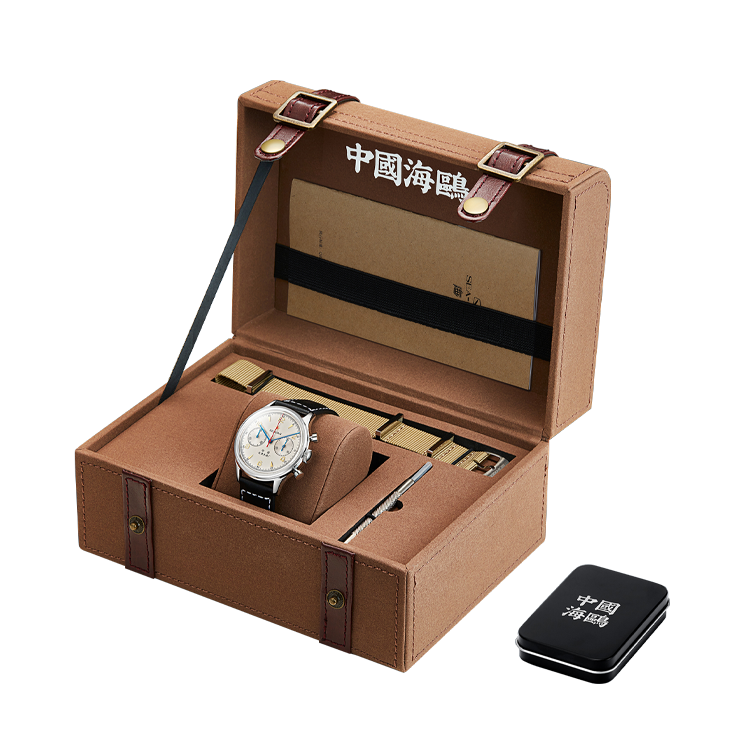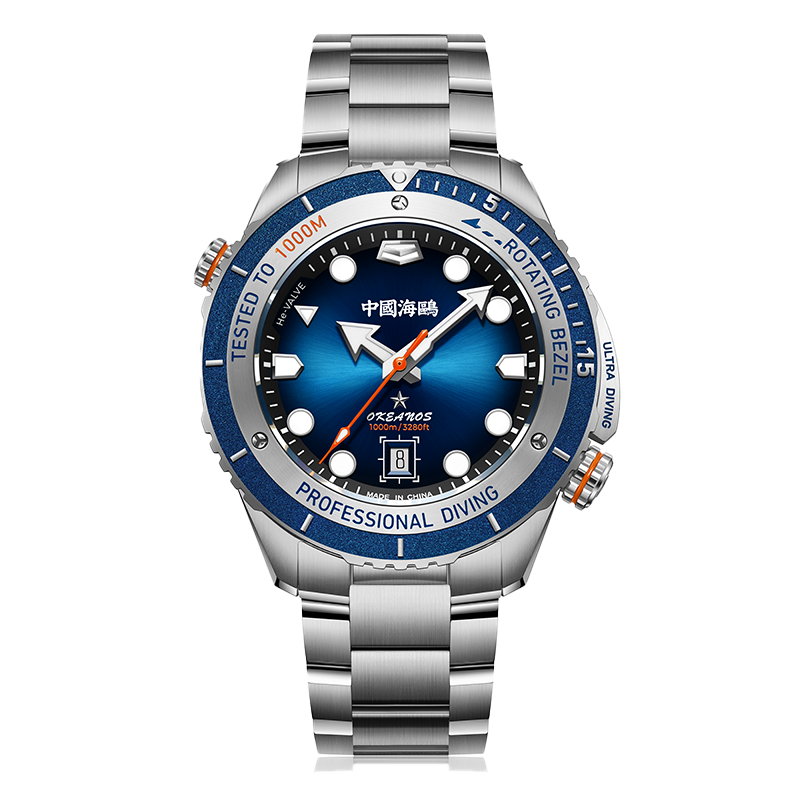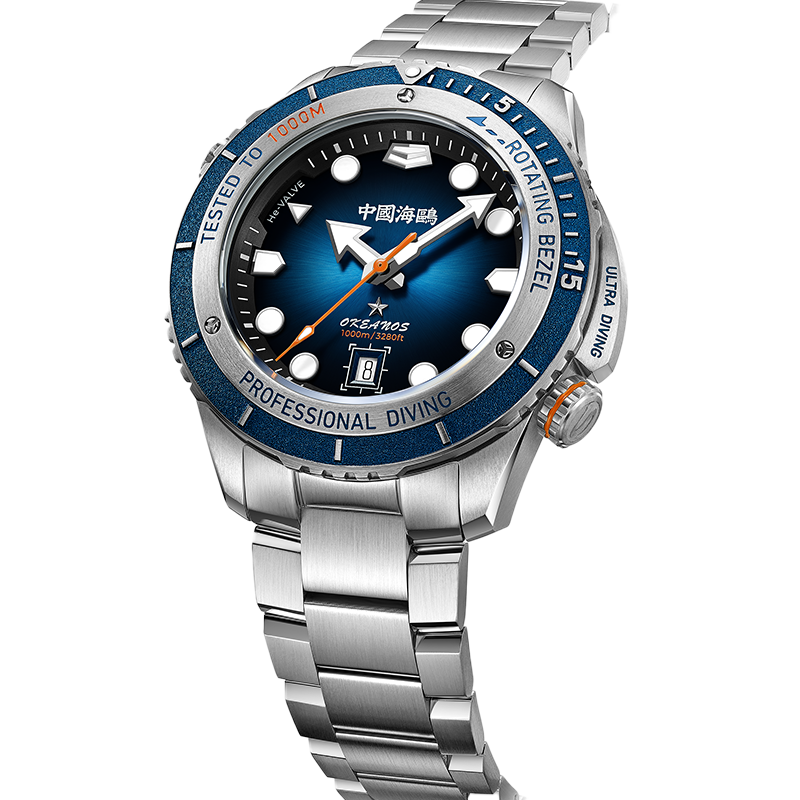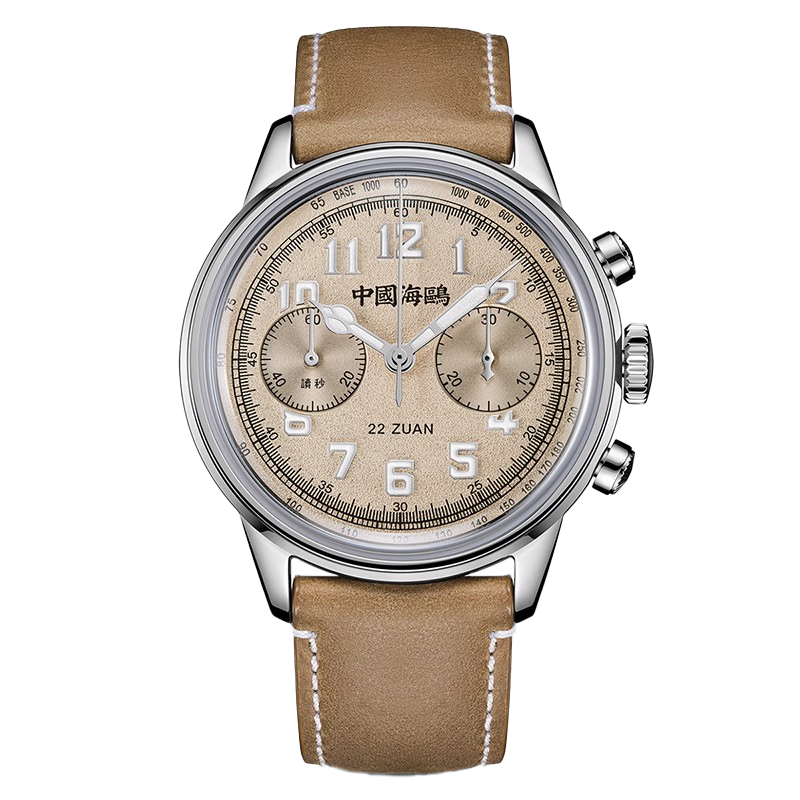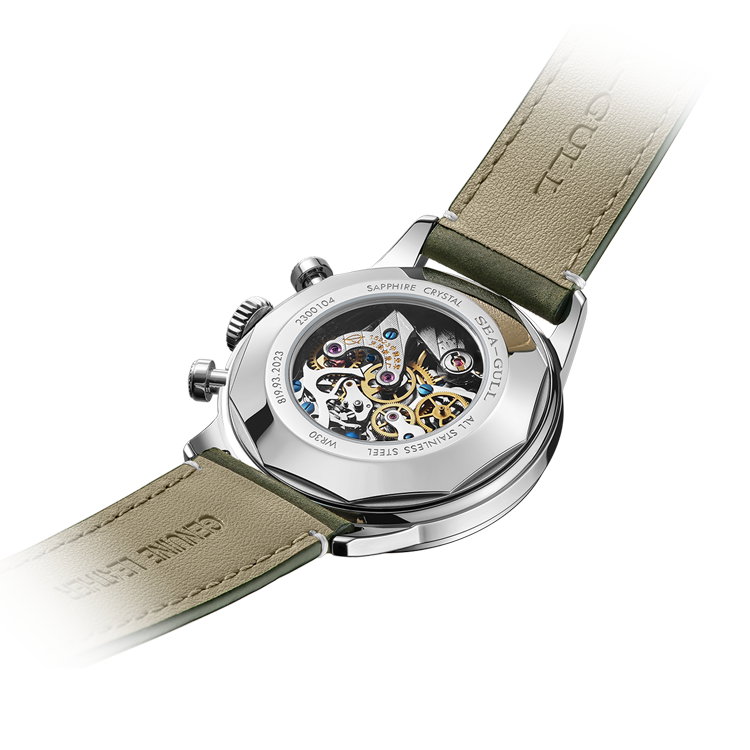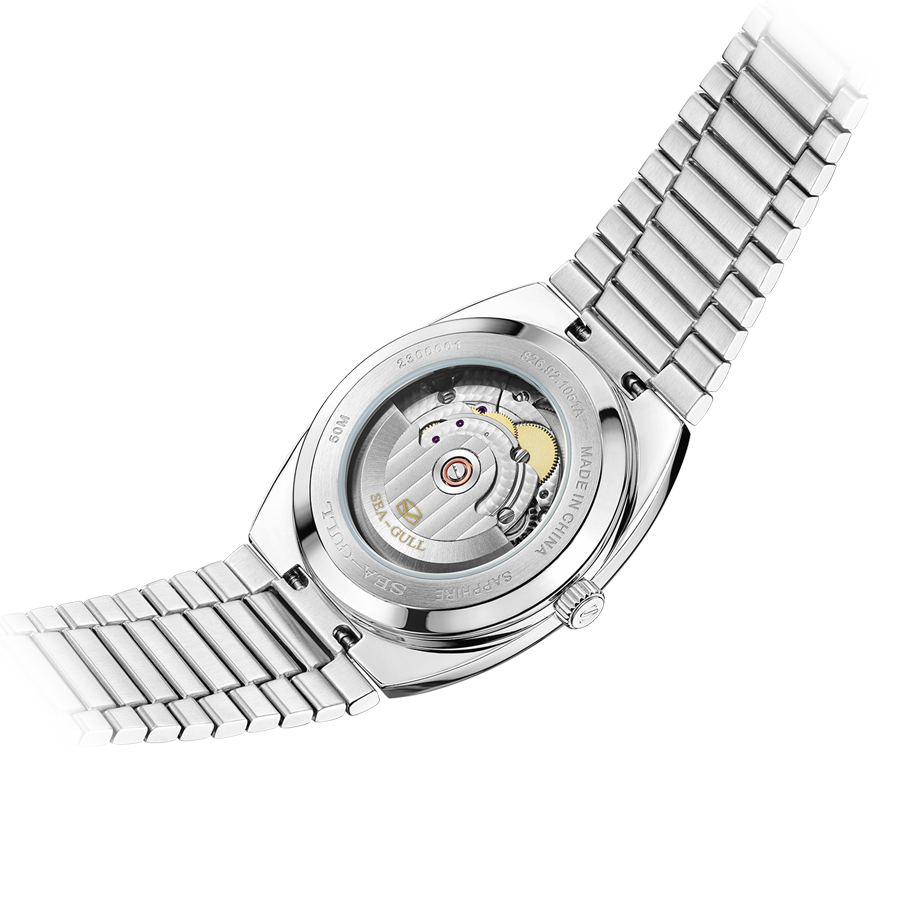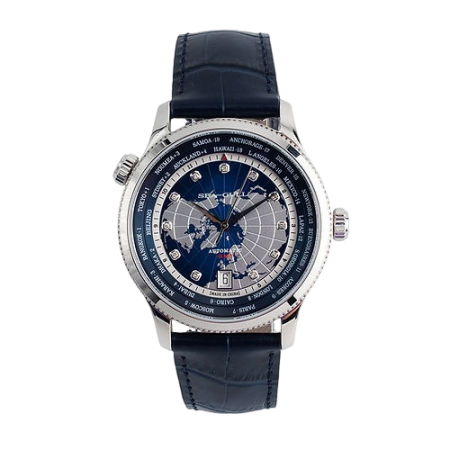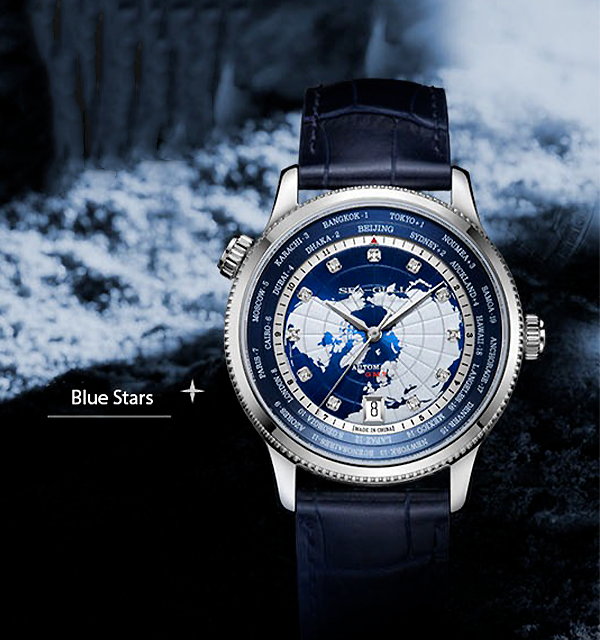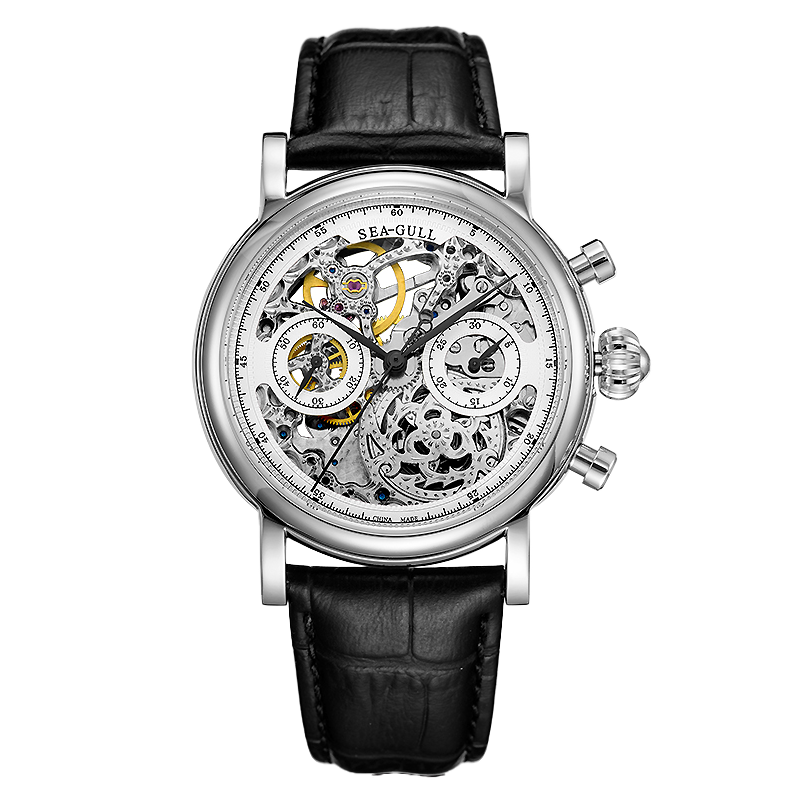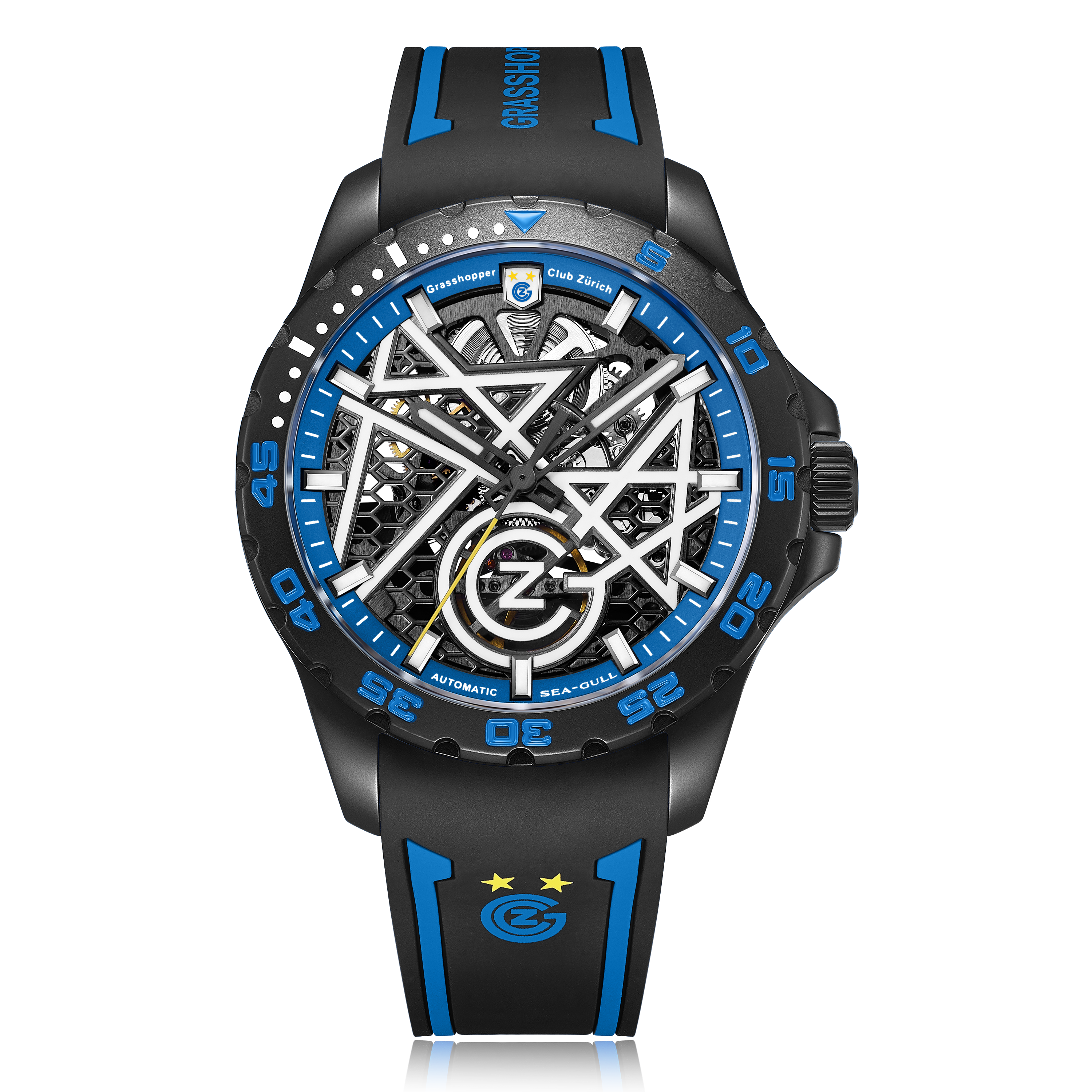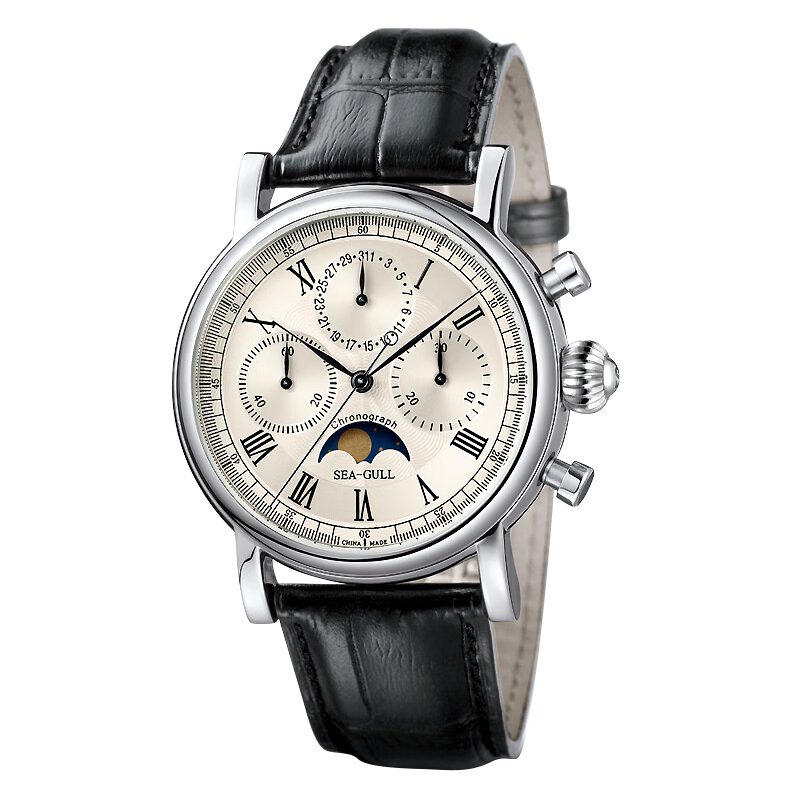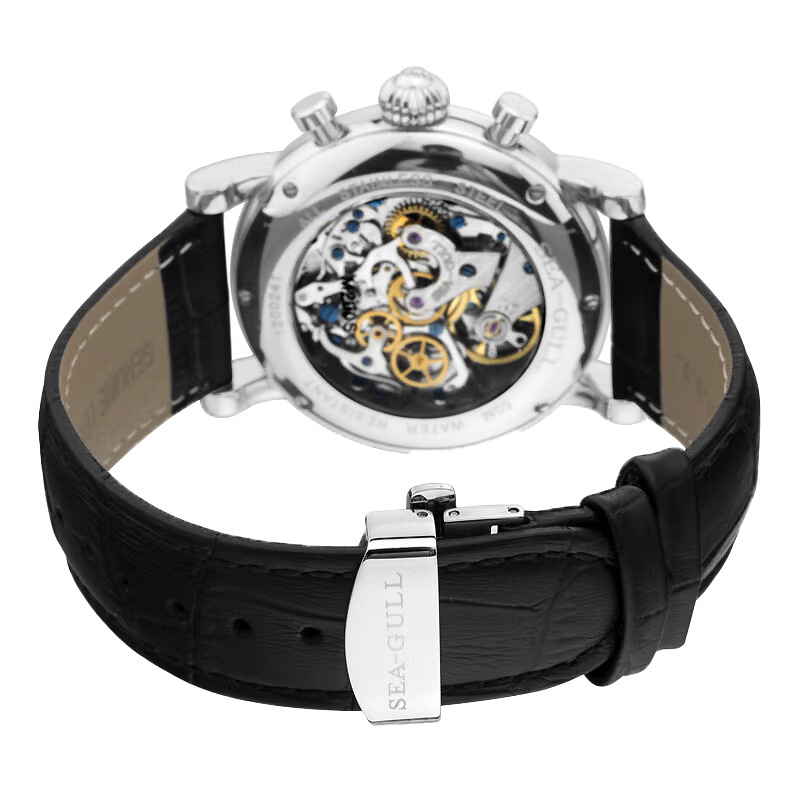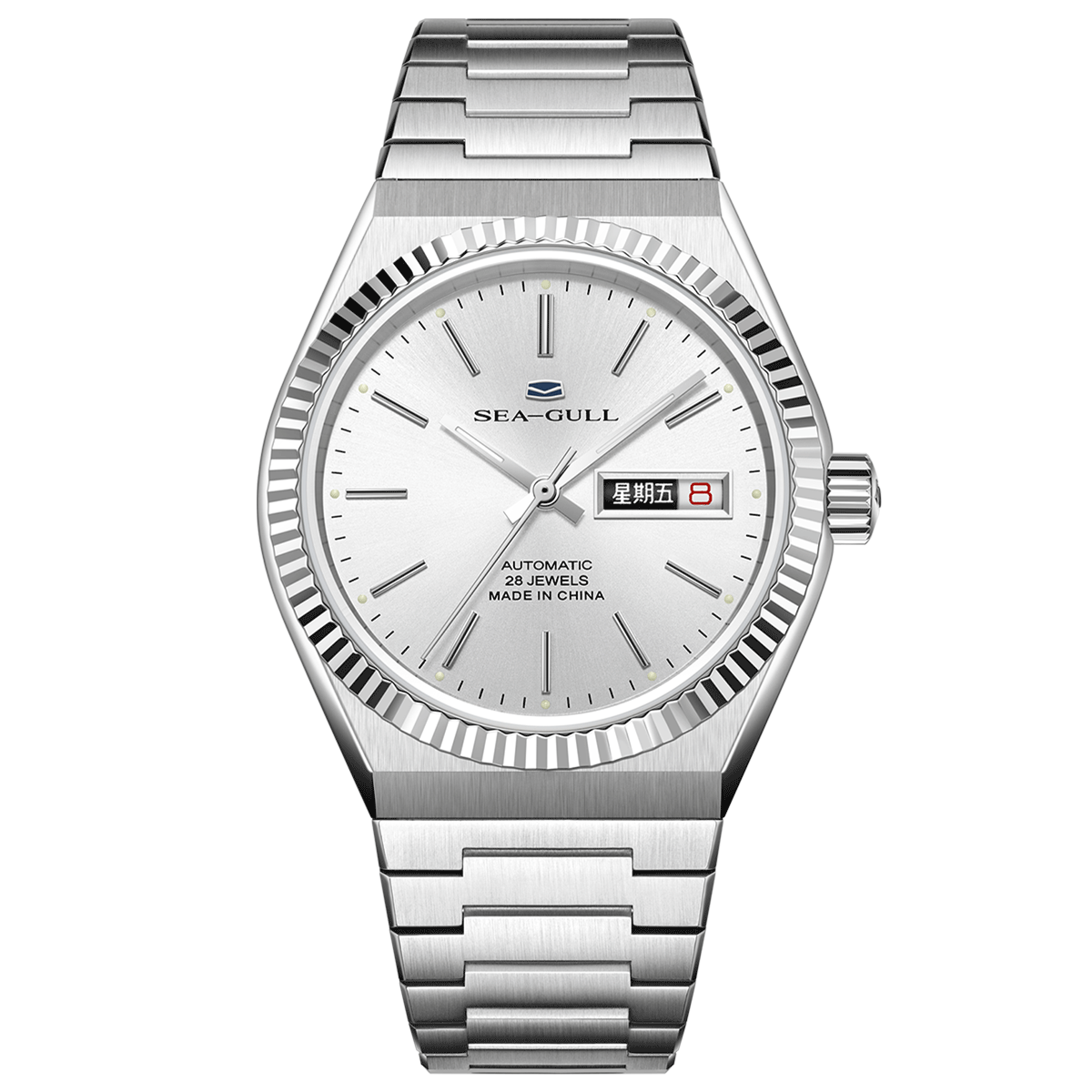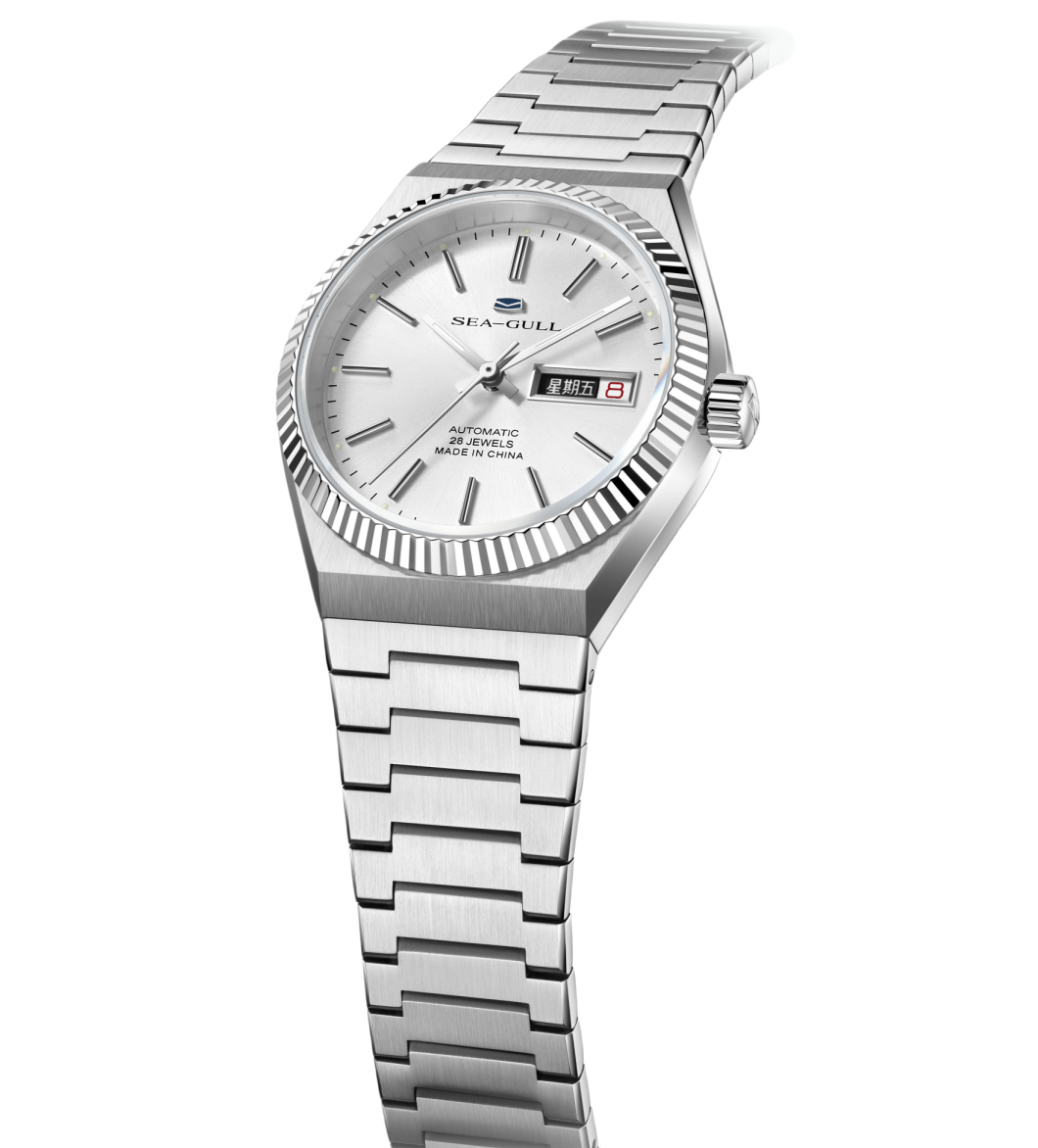The Seagull 1963 Chronograph: How a Vintage Revival Became an Iconic Chinese Watch
With its panda dial styling and 1960s aviation heritage, the Seagull 1963 chronograph has emerged as one of the most iconic Chinese watch models among collectors over the past decade. Its signature retro look combined with proven quality and an affordable price point explain its surging popularity worldwide. This chronograph truly embodies a modern renaissance of Chinese watchmaking.
Mid-Century Origins
To understand the 1963’s lasting appeal, we must first look back to its origins in the thriving Chinese watch industry of the 1950s-60s. Seagull was founded as China’s premier watchmaker in 1955. They produced the country’s first officially branded wristwatch in 1956.
In the early 1960s, China sought to develop its own domestic chronograph movements to align with the nation’s growing aviation and military needs. Up to that point, only simple hand-wound movements had been made. Seagull engineers successfully created the first Chinese chronograph, the hand-wound ST19 movement, in 1963. It was durable, accurate and could measure times up to 30 minutes.
The ST19 powered the launch of Seagull’s first chronograph wristwatch series. The dials took inspiration from 1940s military chronographs, featuring high-contrast subdials in a “panda” black and white color scheme. The bold styling was very fashionable at the time, as chronographs were still a novelty. These ST19 models were intended for pilots and navigators of the Chinese air force and production was relatively small.
Scarcity and Surging Interest
Watch production declined severely in the late 1960s due to China’s Cultural Revolution. Much machinery and tooling was damaged. These early Seagull chronographs became very scarce.
By the 1990s, interest had grown among vintage watch enthusiasts in the West for rare, unspoiled examples of early Chinese watch production. The few surviving 1960s Seagull chronographs were already becoming coveted collector’s items that rarely surfaced at auction.
When the 1963 re-edition was introduced around 2004, it represented a chance to own a near-identical homage to these elusive chronographs. But supplies were again very small, with maybe a few hundred produced over the first several years. Pictures of the striking panda dial design and stories of the 1963’s roots circulated online, developing its mystique.
Its reputation grew as a meticulously crafted revival of an obscure Chinese classic. To collectors, the 1963 offered that magical combination of great design, mechanical pedigree and relative rarity that fuels obsession. Early customers realized they had discovered something special, long before its popularity exploded.
An Icon is Born
By the late 2000s, word was spreading fast among watch enthusiasts that the Seagull 1963 was a must-buy chronograph packing impressive value. As production capacity increased, the model became more readily available internationally.
Watch publications and reviewers heaped praise on the 1963 as their new favorite “affordable chronograph”. They marveled that a hand-wound column wheel movement could be had for around $600 when Swiss alternatives cost 10x as much.
The glowing reviews validated what early fans already knew - the Seagull 1963 was far above its price in quality and stood out from the crowd with its retro flair. By 2010, the model had become a runaway hit as the must-have Chinese vintage-style chronograph.
Perfectly Tuned Proportions
What specific design factors contribute to the Seagull 1963’s enduring popularity?
Case size - The 1963 utilizes a classically-sized 37.5 mm stainless steel case that provides excellent ergonomics. At just 11mm thick, it slides easily under shirt cuffs. The mid-century dimensions give it versatility between formal and casual duty.
Colors - The high-contrast panda dial with its bright white background, inky black subdials and red accented hands provides bold, intuitive legibility. This striking color scheme is central to its retro appeal.
Layout - Symmetrical bi-compax dial configuration, two chronograph registers positioned vertically at 3 and 9 o’clock, looks wonderfully balanced. The date window integrates seamlessly at 6 o’clock.
Typography - The large applied steel numerals, printed minute indices and quirky “Tianjin” heritage logo provide depth and visual interest to the dial.
Crystal - Domed acrylic crystal adds optical distortion reminiscent of vintage sports watches. The playful distortion shifts depending on wrist angle.
Subdials - The chrono minutes and running seconds subdials are well-proportioned, providing crucial timing data without cluttering the dial.
In summary, every dial element coalesces smartly into a harmonious vintage-inspired aesthetic. This purposeful execution of properly balanced design principles explains why the 1963 outshines other retro homages. Its style captivates on an emotional level.
Under the Hood: Why the ST19 Movement Shines
While the good-looking 1963 case plays an important role in its popularity, the excellence of its column-wheel ST19 movement is what gives the model true horological credibility. Watch enthusiasts are drawn to the impressive quality and functionality it delivers at an economical price point.
Column wheel control - The ST19 uses vertical clutch column wheel coupling for precise start/stop of the chronograph functions. This sophisticated architecture provides crisp feel and accuracy.
Manual winding - The hand-wound mechanism adds to the charm of the 1963 for enthusiasts who enjoy the tactile ritual of the daily wind up. About 40 hours of reserve means it’s not a chore.
Decorated movement - The ST19 is nicely adorned with circular Geneva stripes, blued screws and engraved lettering. Peek through the display caseback to appreciate the care invested into its construction.
Shock resistance - Incabloc shock protection gives the 1963 better durability for daily wear and activities. A lot of vintage chronographs were quite fragile.
Historical value - The ST19 can trace its roots back to the earliest Chinese chronograph projects and represents tremendous technical achievement. Its lineage adds meaning.
In-house production - Seagull is vertically integrated, making their own movements start-to-finish. There is pride in owning a timepiece with true in-house manufacturing.
For those passionate about horology, the ST19 delivers sophistication and quality comparable to the best Swiss calibers. That it is accessible at a fraction of the price makes the 1963 an unbelievable bargain prized by watch enthusiasts everywhere.
Customization Options Expand the Appeal
Another factor driving the enduring craze for the 1963 chronograph is the breadth of customization options now offered. The basic 37-38mm 1963 design serves as a canvas for creative expressions.
Diverse dial variants - From reverse panda, to black ops, sunburst orange, green military and textured “Clous de Paris” patterns, there are endless dial styles to match one’s taste.
Case colors - Stainless, black PVD, rose gold PVD and brushed/polished finishes allow personalized cases. Enthusiasts enjoy collecting multiple 1963 variants.
Straps - Mesh bracelets, leather NATOs, sailcloths and DuPont Kevlar bands provide flexibility. There are quick-release pins for easy strap-swapping.
Limited editions - Special collaborations yield rare 1963 editions, like those made with watch blogs HODINKEE and Worn & Wound honoring important years in the model’s history.
The sheer variety of customized 1963 iterations keeps the model perpetually fresh and intriguing to collectors. Fans appreciate the ability to acquire bespoke versions that speak to their personal style.
A Gateway Drug
The popularity of the 1963 has served as an important entry point into the world of Chinese horology for international watch enthusiasts. Its quality dispelled notions that Chinese watches were cheap disposable items.
The 1963 opened the door for other Chinese mechanical watches like the Seagull Ocean Star and Shanghai 8120 to gain respect in the global watch community. Seagull broke out of its strictly domestic reputation to emerge as an exciting brand for Western collectors.
Enthusiasts who catch the “ 1963 bug” frequently go on to develop a wider appreciation for Chinese watch history. Interest grows in vintage 1960s models from Seagull, Shanghai and Beijing watch factories. The thriving trend of “re-issue” models from a range of Chinese brands is also fueled by the 1963’s success.
In the same vein as the Japanese Seiko 5 watch, the 1963 has been a disruptive force that overturned biases. For many, the 1963 was their first mechanical watch and gateway into a fascinating hobby. The model will always hold a special place in their progression as collectors.
The Future of an Icon
The Seagull 1963 has come a long way from its origins as an obscure chronograph issued to China’s early aviators to now being one of the most sought-after modern reinterpretations of a vintage classic. Where does the model go from here?
Rising prices - As its popularity increases, prices on the 1963 have gradually risen over the years. Limited editions now commonly sell out in minutes. Yet at around $600, it still offers reasonable value.
Refined construction - Recent editions feature sapphire crystals, elaborately finished movements and high-end band options. Build quality aims to satisfy collectors’ expectations.
Experimentation - Seagull continues expanding the range of 1963 variants to appeal to different tastes while staying faithful to the original spirit. The novel versions keep it interesting.
Homage status - With its retro roots now well recognized, the 1963 has transitioned from “vintage reissue” to its own legitimate classic. Future models will likely emphasize its iconic identity.
With demand remaining strong worldwide and manufacturing output increasing, the 1963 looks to retain its fame as a pillar of Chinese watchmaking for decades to come. For such an affordably priced model to achieve this lasting impact as a historic design is truly remarkable.
The Seagull 1963 Chronograph: How a Vintage Revival Became an Iconic Chinese Watch
In summary, the Seagull 1963 has earned its status as an icon through its potent combination of vintage appeal, modern build quality, proven movement performance and sheer value. By igniting international interest in Chinese watchmaking, it opened the door for other brands to succeed globally. The 1963’s role as the harbinger of a Chinese horological renaissance seems assured. For watch enthusiasts everywhere, this mid-century chronograph will remain one of the most important designs of the early 21st century.


